Les films ayant le thème "Documentaire sur la nature", triés par recette

The Wetback Hound (1957)
, 18minutesRéalisé par Larry Lansburgh
Origine Etats-Unis
Genres Documentaire
Thèmes L'environnement, Documentaire sur l'environnement, Documentaire sur la nature, Films pour enfants

Ama Girls (1958)
, 29minutesRéalisé par Ben Sharpsteen
Origine Etats-Unis
Genres Documentaire
Thèmes L'environnement, La mer, Transport, Documentaire sur l'environnement, Documentaire sur la nature, Films pour enfants
Acteurs Winston Hibler
Le film présente les ama, des plongeuses en apnée japonaises, connues comme pêcheuses de perles.

Le Monde du silence (1956)
, 1h26Réalisé par Louis Malle, Jacques-Yves Cousteau
Origine France
Genres Documentaire, Aventure
Thèmes L'environnement, La mer, Transport, Documentaire sur l'environnement, Documentaire sur la nature
Acteurs Jacques-Yves Cousteau
Voilà enfin le film de Cousteau et Malle, oscarisé et palme d'Or en 1956 à Cannes, édité en DVD et Blu-ray au niveau de qualité qu'il mérite, qui plus est pour la première fois avec des suppléments !! Tout d'abord le travail de restauration qui a été accompli sur le film est absolument bluffant. Et les suppléments sont inédits, donc intéressants aussi pour ceux qui connaissent le film par coeur.Un documentaire de 50 minutes en HD sur la production du film intitulé « du Silence et des hommes : les pionniers du Monde du Silence ». Le documentaire s'intéresse à la première rencontre entre Louis Malle, alors élève à l'IDHEC et le Commandant Cousteau, le défi technique et humain du film, la Palme d'or à Cannes, la polémique autour du film, qui apparut quelques années plus tard, et les différends au montage entre Malle et Cousteau sur la tonalité globale du film etc.

Grand Canyon (1958)
, 29minutesRéalisé par James Algar
Origine Etats-Unis
Genres Drame, Documentaire, Musical
Thèmes L'environnement, Documentaire sur l'environnement, Documentaire sur la nature, Films pour enfants
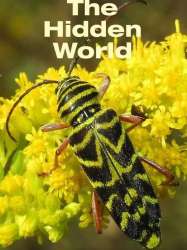
The Hidden World (1958)
Origine Etats-Unis
Genres Documentaire
Thèmes Documentaire sur la nature
Acteurs Gregory Peck
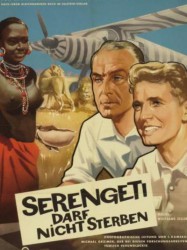
Serengeti ne doit pas mourir (1959)
, 1h25Réalisé par Bernhard Grzimek
Genres Documentaire
Thèmes Afrique post-coloniale, Mise en scène d'un animal, L'environnement, Documentaire animalier, Documentaire sur l'environnement, Documentaire sur la nature
Acteurs Bernhard Grzimek
Le documentaire est un plaidoyer pour l'importance de la préservation de l'écosystème du Parc national du Serengeti en Tanzanie, rendu célèbre dans le monde entier grâce à Bernhard Grzimek.

The London Scene (1961)
Origine Royaume-uni
Genres Documentaire
Thèmes Documentaire sur les villes, Documentaire sur la nature
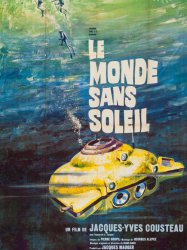
Le monde sans soleil (1964)
, 1h30Réalisé par Jacques-Yves Cousteau, Albert Falco, Simone Melchior
Origine France
Genres Documentaire
Thèmes L'environnement, La mer, Transport, Documentaire sur l'environnement, Documentaire sur la nature
En 1963, Jacques-Yves Cousteau et son équipe entament une expérience inédite : vivre un mois durant, dans un village sous-marin aménagé dans la Mer Rouge, sur les côtes du Soudan. C'est l'expérience dénommée Précontinent II.
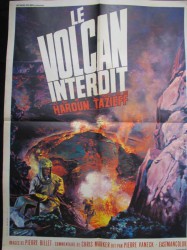
Le volcan interdit (1966)
, 1h20Réalisé par Chris Marker
Origine France
Genres Documentaire
Thèmes Volcanisme, Documentaire sur la nature
Acteurs Pierre Vaneck
Documentaire consacré au volcan congolais Nyiragongo.
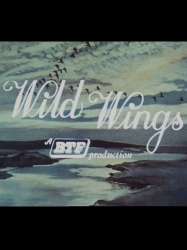
Wild Wings (1965)
, 34minutesOrigine Royaume-uni
Genres Documentaire
Thèmes Mise en scène d'un animal, Transport, Le train, Documentaire sur les technologies, Mise en scène d'un oiseau, Documentaire sur la nature

Die Letzten (1967)
, 1h56Réalisé par Eugen Schuhmacher
Genres Drame, Documentaire
Thèmes Mise en scène d'un animal, L'environnement, Documentaire sur la nature
Acteurs Carl Lange, Wolf Ackva, Alice Treff, Edith Schultze-Westrum, Horst Janson
After an animated introduction about the history of extinct species (e.g. the quagga, the great auk and the dodo) it has gone to 60 countries and territories (including Turkey, Spain, Germany, Poland, Australia, Borneo, Chile, Spitzbergen, New Zealand, Papua New Guinea, India, Java, USA, and Peru) on all continents and to the most famous national parks. Species like the Hamilton's frog (Leiopelma hamiltoni) or the Javan rhinoceros were filmed for the very first time. Other sequences including footage of the kakapo, the takahe, the dancing of the red-crowned cranes, the fishing Kodiak bears, the whooping crane, the Asiatic lion, the Komodo dragon, the tuatara, the indri, and the birds of paradise. In particular the filming of the whooping cranes was the result of adventurous circumstances. Because the whooping crane was among the rarest birds in the world in the early 1960s there was no permission to entry the Aransas National Wildlife Refuge in Texas. Fortunately the cranes were provided with food by a plane and during that time the birds came to a wetland in the proximity of the fence. Schuhmacher and Barth planted themselves in a boat in a channel in front of the fence and were able to take some footage from a female and a chicken.

The Redwoods (1967)
Origine Etats-Unis
Genres Documentaire
Thèmes L'environnement, Documentaire sur l'environnement, Documentaire sur la nature

Rivers of Fire and Ice (1968)
, 1h38Origine Etats-Unis
Genres Documentaire
Thèmes Afrique post-coloniale, Mise en scène d'un animal, Documentaire sur la nature
Acteurs Michael Rye

The Gifts (1970)
Origine Etats-Unis
Genres Documentaire
Thèmes L'environnement, Documentaire sur l'environnement, Documentaire sur la nature
Acteurs Lorne Greene
 Connexion
Connexion
